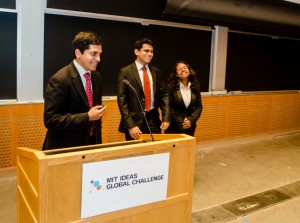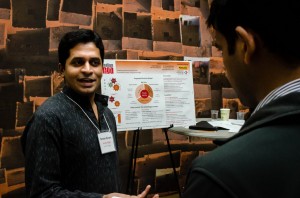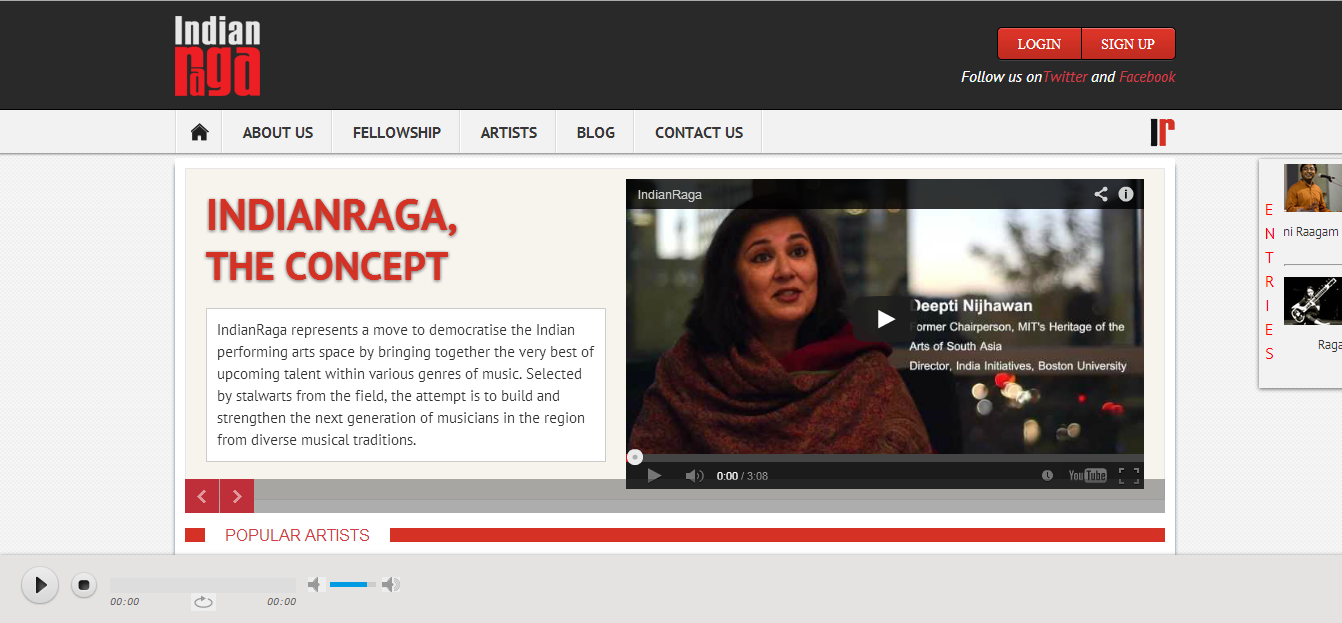We often see startups coming up in Tech Space and competing fiercely in the same segments. When we encountered IndianRaga,an MIT-based student-led venture to infuse technology and innovation to Indian classical arts and music, it sure got noticed. IndianRaga represents a move to democratize the Indian performing arts space by bringing together the very best of upcoming talent within various genres of music. Founded by the team of 5 – Sriram Emani(CEO), Anasuya Mandal, Neha Jaiswal, Arjun Shrinath and Aditya Shah, IndianRaga won the US Creative Business Cup 2012, and represented the United States at the Global Entreprenurship Week in Copenhagen in November 2012. The team also won the Community Choice Award at the MIT IDEAS Global Challenge in April 2012.
 IndianRaga along with Navatman and key Indian arts groups in NYC is presenting Drive East, a week-long celebration of Indian arts in the world’s cultural capital, with over 40 concerts, the IndianRaga Fellowship and a summer camp for kids. Previously, IndianRaga teamed up with the Association for India’s Development (AID), and the International Campaign for Justice in Bhopal (ICJB) to present a fundraiser concert by clarinetist-composer Shankar Tucker at MIT in November 2012, which was a resounding success. Indian Raga’s team is currently in the phase of approaching investors and angels. “We have had a few good conversations on this front, and are looking at an angel or VC round around end-2013”, says Anasuya Mandal.
IndianRaga along with Navatman and key Indian arts groups in NYC is presenting Drive East, a week-long celebration of Indian arts in the world’s cultural capital, with over 40 concerts, the IndianRaga Fellowship and a summer camp for kids. Previously, IndianRaga teamed up with the Association for India’s Development (AID), and the International Campaign for Justice in Bhopal (ICJB) to present a fundraiser concert by clarinetist-composer Shankar Tucker at MIT in November 2012, which was a resounding success. Indian Raga’s team is currently in the phase of approaching investors and angels. “We have had a few good conversations on this front, and are looking at an angel or VC round around end-2013”, says Anasuya Mandal.
Story behind the Startup
For Sriram Emani, a desire to launch a platform for young artists has been there since his childhood when he saw the contrast between the opportunities for engineers in India, and those for artists. Emani went to IIT Bombay to pursue his passion for science and technology, and was always trying to understand how technology could be leveraged to promote the creative industry. “One thing that I observed was that while arts organizations in India spend significant budgets on marketing high profile concerts, there is very little done by both them and the media to promote younger artists. In my mind it should be the other way round, since it is the younger artists who need a higher marketing effort!” says Emani.
From Anasuya’s perspective, “It started with a casual conversation between us (Sriram and I) in March 2012, when I was looking to help out with something she was passionate about and Sriram happened to tell her about a nascent idea in his head called IndianRaga. Neha (Our third co-founder) and Sriram met through a chance encounter when they both missed their flights to India from New York, and got talking about IndianRaga. Over the year, we have been carefully choosing key passionate people to head critical roles at IndianRaga. The love for music and the will to help people pursue their dreams were, and indeed still are, our strongest drives. We decided to participate in the MIT IDEAS Global Challenge that April where we won the Community Choice Award with over a thousand votes and things have just been rolling since then.”
Platform for Aspiring Musicians
 Musicians would find an online space, via our platform, that would essentially serve as their portfolio and their outreach page. Equipping them with all the tools they need to build a strong presence online in addition to connecting them with performance opportunities and resources to help them hone their skills is what we endeavor. IndianRaga is still in its early stages, and a majority of the features and resources we are building are yet to be offered to musicians. However, some of our members and the newly selected group of IndianRaga Fellows are optimistic about the value proposition of such a platform and have started using it already. Here is what they have to say:
Musicians would find an online space, via our platform, that would essentially serve as their portfolio and their outreach page. Equipping them with all the tools they need to build a strong presence online in addition to connecting them with performance opportunities and resources to help them hone their skills is what we endeavor. IndianRaga is still in its early stages, and a majority of the features and resources we are building are yet to be offered to musicians. However, some of our members and the newly selected group of IndianRaga Fellows are optimistic about the value proposition of such a platform and have started using it already. Here is what they have to say:
Harsha Nagarajan, a violinist and consistent performer both in India and the US and currently a graduate student at Texas A&M says, “Many talented Indian Classical musicians haven’t been able to make it into a full time career either because the financial back up in this career is unpredictable or due to the lack of right marketing skills on the musician’s part. Considering the birth of IndianRaga portal at the technological and entrepreneurial hub, the MIT and under the scholarly guidance of leading musicians, it certainly wouldn’t be less to expect from it as a breeding place of high-quality full time musicians…”
Marketing Strategy and Revenue Model
Since our launch last year, our strategy has been to directly be in touch with upcoming, aspiring musicians mainly within US and Canada. We’ve been consistently trying to spread the word to students in various classical music academies and schools, conventions for Indian classical music that are held periodically and working to get some of the leading names to help us do the same. India still has a significantly low internet penetration in comparison to other fast-developing economies. Moreover, the dedication, passion and willingness to spend on Indian music by the diaspora community in USA is significantly strong. Hence we are starting with Indian musicians in US and Canada, where not only is technology adoption higher but also the ability to reach out to our target audience.
The revenue model for IndianRaga is based on an annual subscription fee for musicians that would give them access to performance opportunities, collaborative projects and connections with event managers (recruiters). Recruiters, in the same vein, get benefits of advertising opportunities for artists and booking artist services among other offerings.
Best & Worst Experience So Far
One of the best experiences was receiving feedback from our initial supporters during the phase of the MIT IDEAS Global Challenge in 2012 where we won the Community Choice Award with over a thousand votes. It was extremely encouraging to hear people echo our enthusiasm and support our idea.
Here are a few of the messages we received then:
“… I would like to congratulate you all for taking an initiative like this and it means a lot to young artists who are otherwise clueless as what to do with their work.“
“Thank you from all the musicians who might benefit from this initiative in the future!”
In terms of the worst experience, we’d take the chance to talk about one of the greatest challenges we’ve faced.
The world of Indian classical music is fragmented in many ways, and the lack of industry reports, data and organized market research in this space poses a challenge when thinking about what would be most valuable to offer to its members. We have to rely on anecdotal evidence and advice from industry leaders, mentors and experts to launch the initial set of offerings, but we are looking forward to the data we shall gather from that phase based on which we will be able to build further.
Advice for Entrepreneurs aspiring to venture into non-tech areas
From our limited experience so far, we actually think that these genres that have traditionally been non-tech are now actively adopting emerging media and technology at a rapid pace. Sriram Emani’s experience at the global creative business conference involved discussions around application of technology to reinvent business models in the creative industry, and how young entrepreneurs can rethink these genres in the digital age.
At the same time, our experience over the last year with IndianRaga has also been that it takes some time to change mindsets and facilitate technology adoption in these genres. Entrepreneurs have to be patient with their early adopters.
At the end of the day, however, we also think these are genres that are abundant with passion, enthusiasm and energy that is contagious and makes the process worth every bit! The creative industry across the world is being seen as a sunrise sector, and it can only get better!













